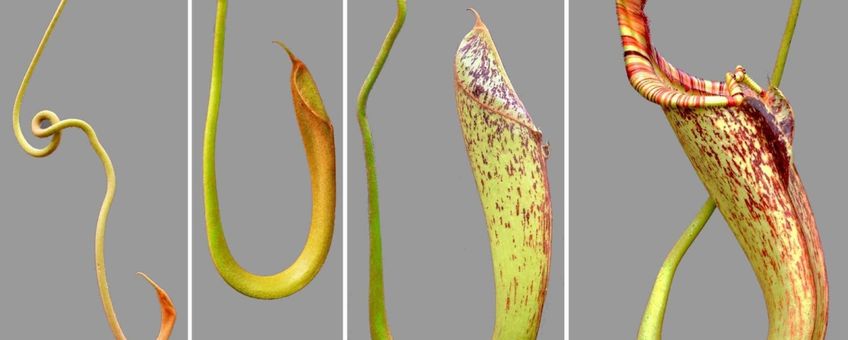
Lasers shed new light on carnivorous plant development
Naturalis Biodiversity CenterA tale of two pitchers
This study is the first to build a quantified profile of trap shape and its glands as they progress through development for the remarkable carnivorous pitcher plant Nepenthes. Carnivorous plants have long sparked interest because of their ability to attract, capture, digest and absorb insect prey. Nepenthes has two different trap types on a single plant, an upper and a lower pitcher, so it is doubly captivating.
With light and laser: marrying old and new morphology tools
Although botanical morphology has historically been an important tool to taxonomists and ecologists, few botanical studies have employed the more recent technologies of 3D-geometric-morphometric analysis despite it being on the forefront of new tools used in agricultural advancement. Marrying of old and new tools is a complementary way to provide verification of the new and also enhance the old. In addition to microscopy and caliper measures, we also used a 3D-laser light scanner for overall shape analysis. Growing pitchers, sometimes still attached to the plant so we could track it through all phases, were rigged up to the laser scanner with a movable arm. It captures a 3D-image and allows quantifiable measures of shape.


New types of glands discovered
Our study defines four distinct phases for both types of developing tropical pitcher plant traps: curvation of the trap attachment site, elongation of the trap, inflation and finally maturation when the trap top opens. The glands inside the pitcher appear quickly in trap development. These glands are responsible for the digestion of insect prey, their retention and also their attraction to the plant.
In fact, during our investigation, we found a new type of glands on the ridged opening of the trap that produces a sugar substance. This sugar might be used to lure an insect into coming close to the very dangerous trap opening, and then ‘slip’ in it to end in the thick digestive fluid inside. The identified progression of shape and glands through development lends a solid framework for further studies.


More information
- The full article: Ontogeny and Anatomy of the Dimorphic Pitchers of Nepenthes rafflesiana Jack.
Text: Rachel Schwallier and Barbara Gravendeel, Naturalis Biodiversity Center
Pictures: Rogier van Vugt and Valeri van Wely, Hortus Botanicus; Naturalis Biodiversity Center
